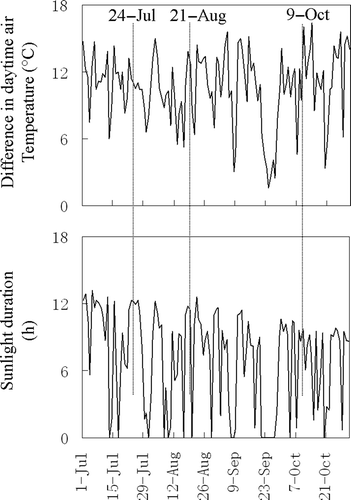Figures & data
Figure 1 Precipitation and daily mean air temperature at the study site for the study period of 2009.
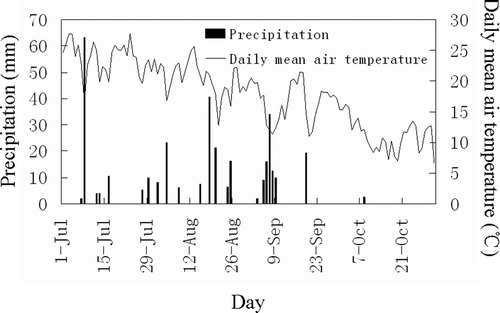
Figure 2 Daytime changes of the soil respiration from 06:00 h to 20:00 h for shrubland, grassland, fallow land and cropland. Each data point represents the mean value of three measurement locations for each vegetation type.
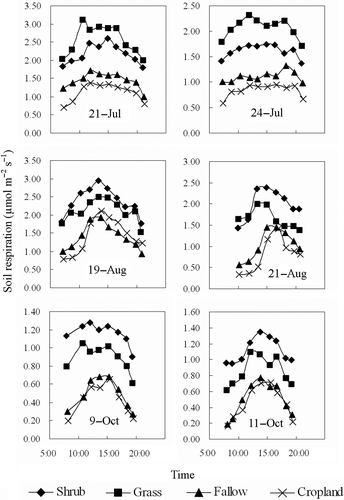
Figure 3 Relationships between the daytime soil respiration and daytime temperatures. SR (soil respiration), Ta (air temperature), and Ts (soil temperature) deviation are the percent deviation of SR, Ta, Ts from their daytime average value, respectively. Each data point was obtained from the mean value of three measurement locations for each vegetation type of the six measurement days.
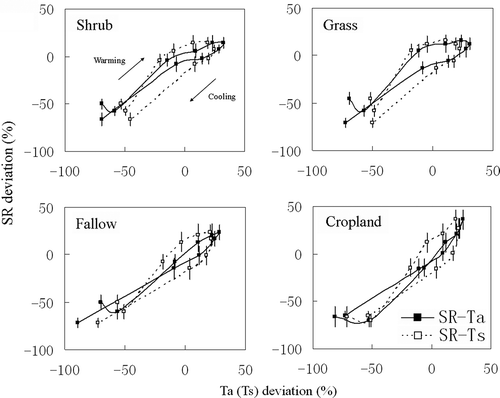
Figure 4 Soil respiration, soil temperature and soil water content for the shrubland, grassland, fallow land and cropland. Each data point represents the mean value of three measurement locations for each vegetation type.
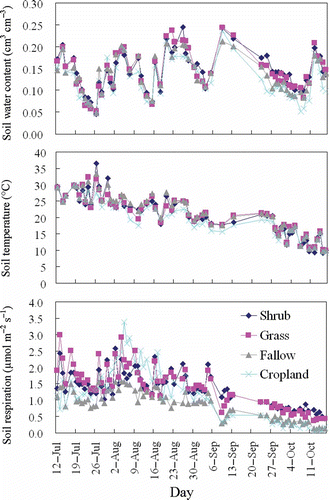
Figure 5 Effects of the vegetation types on soil respiration (SR, µmol m–2 s–1), soil water content (SW, 0.1 cm3 cm–3), soil temperature (ST, 10°C), root biomass (RB, 10 g m–2), and leaf area index (LAI, m2 m–2) for each month. Values followed by different lower-case letters within columns are significantly different at P < 0.05.
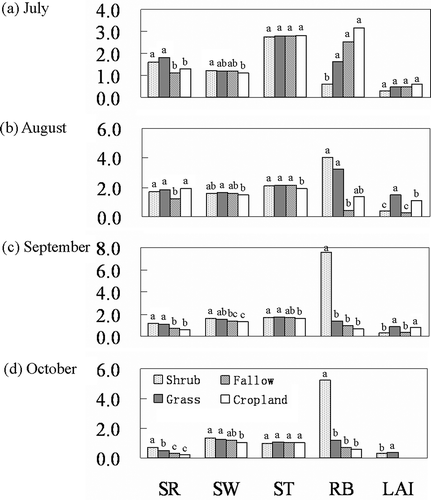
Figure 6 Cumulative daytime soil respiration over the study period of 123 d for the shrubland, grassland, fallow land and cropland. Values followed by different lower-case letters are significantly different at P < 0.05.
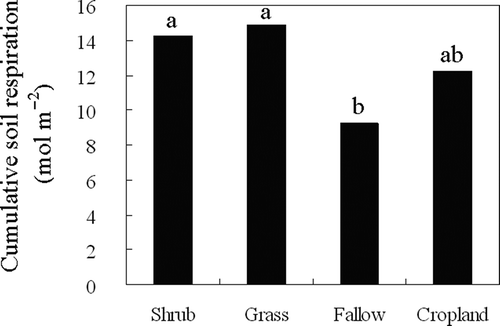
Table 1 Results of multiple stepwise regression analysis (n = 12, three monthly averages of each vegetation type) for the relationships of soil respiration (SR) with soil water content (SW), soil temperature (ST), root biomass (RB), and leaf area index (LAI) for each month.
